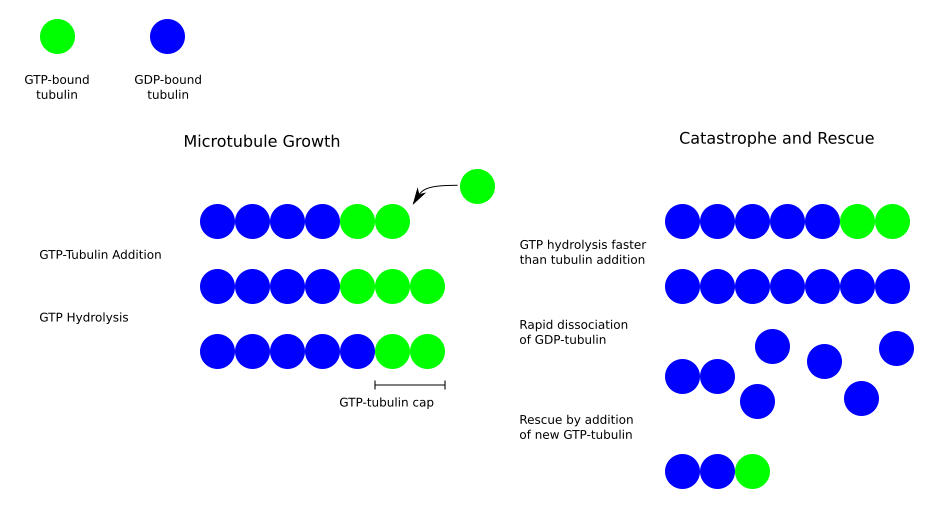Dynamic instability
Under dynamic instability is defined as the dynamic assembly and disassembly of microtubules .
Microtubules have a positive end at the edge of the cell (cell periphery) and a negative end in the microtubule organizing center ( MTOC ) near the cell nucleus .
Under suitable conditions, individual tubulin molecules with firmly bound guanosine triphosphate (GTP) attach to the positive end of the microtubules, causing them to grow ( polymerisation ). After a short time, the GTP is broken down into guanosine diphosphate (GDP) by hydrolysis . However, it remains bound to the tubulin. This creates a cap of GTP tubulins on the positive side of the microtubules, which is followed by a long chain of GDP tubulins in the direction of the negative end (see graphic on the left).
The breakdown (depolymerization) takes place when the hydrolysis proceeds faster than new GTP tubulin is bound. In this case, it can happen that the GTP of the last tubulin molecule in the chain breaks down to GDP, causing the microtubule to rapidly depolymerize ( catastrophe ). The depolymerization is only interrupted when a new GTP tubulin binds to the disintegrating strand and a new GTP tubulin cap forms ( rescue , see graphic on the right).
